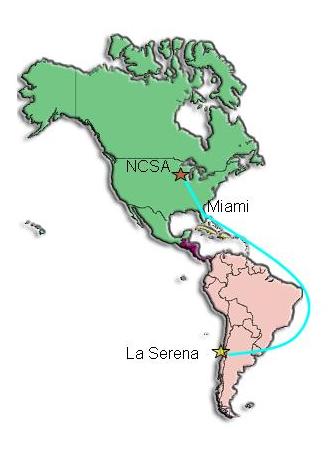These days it seems like every pundit in the world is “discovering” that the internet is a bad thing. And many seem to think this is news.
It isn’t news.
Way back when, at the very beginning of the World Wide Web, we saw where it was going, and warned the world.
I recently dug out an old article about “Digital Commerce” [1] from the National Center for Supercomputing Applications where Mark Andreessen’s “genius” technology came from. (You didn’t think he invented the technology he commercialized, did you?)
I want to be clear here: this article was written in 1995. Netscape was six months old, and hadn’t IPOed yet, MS Internet Explorer wasn’t out for another six months. Amazon booted up later that year, Paypal was three years in the future. Zuck was what, in third grade? Vitalik Buterin (Mr. Ethereum) was in diapers. Travis Kalanick (Mr. Uber) was applying to UCLA (from which he eventually dropped out).
In the article, Sensei Adam Cain (a student at the time, who didn’t drop out) and I described the landscape of the near future of internet commerce [1]. The early tech was very crude and laughably out of date now, but we could clearly see what was coming.
The most interesting thing to me is the discussion at the end of the paper. We noted that digital commerce was going to be destabilizing (“disruptive”) in many ways, and would challenge governments and laws. We worried about digital markets, and about digital cash (pre-Paypal and pre-Bitcoin!), for exactly the reasons we now worry about them.
Well, that all surely happened.
“As more and more economic and social activity is conducted online, what will this mean for society and the economy? The prognosis is far from clear. Digital commerce occurs with blinding speed, unrestrained by boundaries or distance- often beyond human comprehension and regulation. Will the digital economy be wildly volatile, full of lightning surges and panics of worldwide proportions? Can nation-states, as we know them, exist without a monopoly on money? If not, then what sort of governments, laws, and public institutions will come to exist?” (p. 39)
Equally important, we called out the social effects, the rise of digital communities, and the corresponding erosion of physical communities. In a memorable phrase, I argue that “A home page is no substitute for a home or a hometown.” And we ask the vital question, “If digital commerce does not offer support for a decent way of life, what good is it?” (p. 39)
Quite.
“Digital commerce may help make new virtual communities economically viable. Just as small towns and regions are held together by cultural ties and supported by local economic activity, online communities will form that will be supported by digital economics. In the end, though, commerce is not culture, and digital communications are cold and impersonal. A home page is no substitute for a home or a hometown. If digital commerce does not offer support for a decent way of life, what good is it? “
We knew, right at the beginning, the deep, dangerous changes we were initiating.
And we told you.
So don’t say we didn’t warn you.
- Adam Cain and Robert E. McGrath, “Digital Commerce on the World Wide Web, in NCSA access magazine. 1995, National Center for Supercomputing Applications: Urbana. p. 36-39. http://hdl.handle.net/2142/46291




